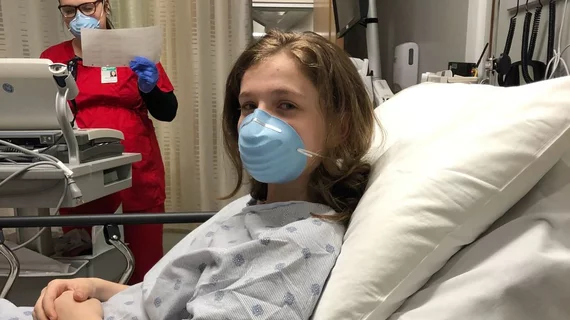CT detects coronavirus abnormalities before symptoms appear, reveals new clinical finding
Computed tomography can detect abnormalities in patients with lab-confirmed coronavirus even before clinical symptoms appear, according to a new case study. It’s yet another key piece of evidence demonstrating the modality’s central role in containing this deadly outbreak.
The case—published Feb. 22 in Clinical Imaging—details that of a 61-year-old asymptomatic man who was admitted to a Chinese hospital 1,000 miles outside of Wuhan after reporting close contact with an infected individual. In addition to detecting early abnormalities, CT revealed a finding not seen in any other cases of COVID-19.
“There is a small but growing body of literature regarding the imaging findings of COVID-19…, and the patient in this case report demonstrates both similarities and differences compared with the literature,” Chen Lin, with Lanzhou Lung Hospital in China, and colleagues wrote. “Most noteworthy is that the COVID-19 patient in this case is the first reported, to the best of our knowledge, with associated bilateral pleural effusions.”
Lin and colleagues pointed out that this man ultimately had bilateral pulmonary involvement, which is consistent with 98% of the first 41 individuals admitted to a hospital in Wuhan—later published in the Lancet. Unlike that group, however, this patient’s initial chest CT scans showed ground-glass opacities, with later images revealing bilateral consolidation; the opposite occurred in the initial group of infected patients.
These findings also coincide with a recent spike in the number of European cases. Italy has reportedly locked down 50,000 people in 10 towns over the weekend, according to the New York Times. As of today, that country’s case count has reached 219, up from 152 the day prior, the news outlet reported, including a fifth confirmed death. All told, the World Health Organization has recorded 79,407 total cases of COVID-19 worldwide, with 2,622 deaths.
Experts have maintained that radiologists’ have an important role to play during this outbreak, with a number of imaging-related journals publishing studies on the topic. One such study found that, in a group of 51 patients, chest CT was far more sensitive at identifying those with the novel virus, compared to real-time lab testing.
There is still a lot researchers and clinicians do not know about this outbreak, but Lin and colleagues’ case offers another step in the right direction.
“In sum, emerging information seems to suggest that typical imaging findings of COVID-19 include ground-glass opacities and/or mixed GGO and mixed consolidation,” they said.
“Future series and studies should seek to assess if this is the case on a larger scale, as well as the association between viral clearance of COVID-19 on laboratory analysis and clearance on imaging,” the authors added.

